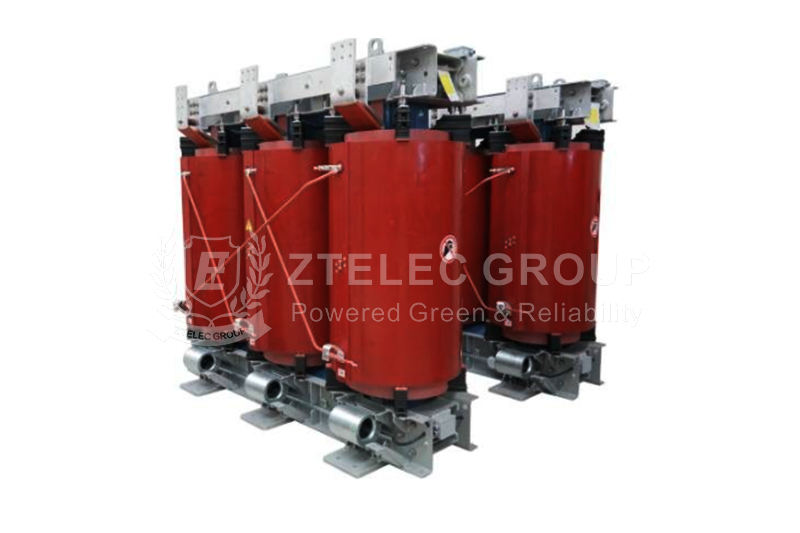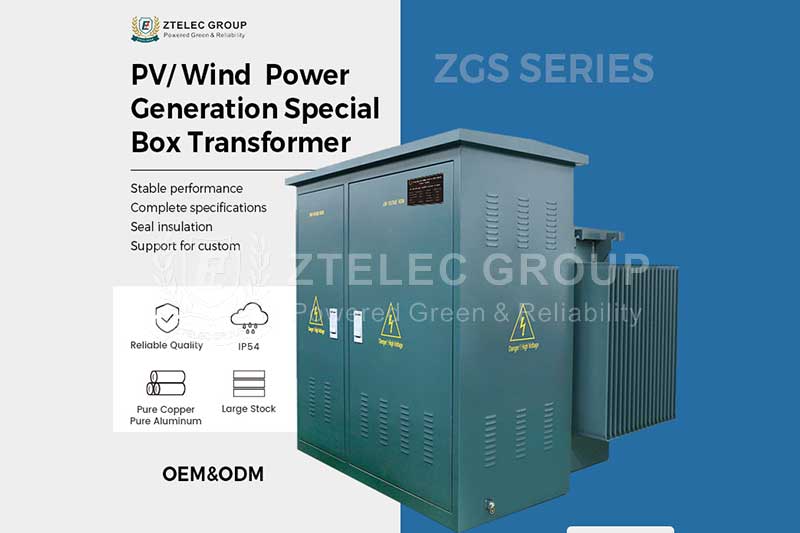Growth trend: Why dry-type transformers surpass oil-immersed transformers
Time:2025-04-22 Auther:ZTelec-www.ztelectransformer.com
In the transformer market, dry-type transformers are gradually surpassing traditional oil-immersed transformers, showing a strong growth trend. This transformation is not accidental, but the result of multiple factors, covering multiple key areas such as safety, environmental protection, performance, and application scenarios.
Safety advantages lay the foundation for development
In the stable operation of power equipment and systems, safety is undoubtedly the most critical consideration. Compared with oil-immersed transformers, dry-type transformers have significant advantages in safety performance that cannot be ignored, which also lays a solid foundation for its market growth. Oil-immersed transformers use insulating oil as cooling and insulating medium. However, once there are faults such as winding short circuit and insulation aging inside the transformer, the insulating oil is very likely to burn or even explode, which will cause serious safety accidents.
Dry-type transformers use air or other solid insulation materials to eliminate the risk of fire and explosion caused by oil filling from the root. This feature enables dry-type transformers to operate safely and stably in environments with extremely high safety requirements, such as crowded places and high-rise buildings. Like large commercial complexes, there is a huge flow of people every day. Once a fire occurs in these places, the consequences are unimaginable. The use of dry-type transformers can effectively avoid fire hazards caused by transformer failures; special places such as hospitals and schools have strict requirements for safety protection. With its safety advantages, dry-type transformers provide strong protection for the safety of personnel and property. This significant safety advantage has allowed dry-type transformers to gradually dominate the market demand and has strongly promoted the continued growth of their market share.
Environmental protection requirements drive market transformation
With the continuous awakening of global environmental awareness, environmental protection requirements for power equipment are becoming more and more stringent. During the operation of oil-immersed transformers, there is a risk of insulating oil leakage. Once leaked, it will cause serious pollution to the soil and water sources. Not only that, the production and treatment process of insulating oil will also have a negative impact on the environment. Moreover, after the oil-immersed transformer is scrapped, the treatment of its internal insulating oil is not only costly but also difficult.
Dry-type transformers do not use insulating oil, which completely solves the problem of insulating oil leakage and environmental pollution. Its manufacturing process is relatively environmentally friendly, and the treatment after scrapping is also easier. At present, with increasingly stringent environmental protection policies, more and more companies and projects tend to choose dry-type transformers to meet strict environmental protection requirements. For example, in cities with extremely high requirements for air quality and water resource protection, new commercial buildings and public facilities give priority to dry-type transformers. The continuous promotion of such environmental protection requirements has made the market demand for dry-type transformers show a rising trend, which has effectively promoted the rapid development of its market.
Performance improvement meets diverse needs
The continuous improvement of dry-type transformers in performance is another important factor that makes them surpass oil-immersed transformers. With the rapid development of science and technology, dry-type transformers have made significant progress in multiple key performance indicators such as efficiency, loss, and noise. In terms of efficiency, advanced dry-type transformers use high-quality core materials and optimized winding design, which can effectively reduce iron loss and copper loss, and greatly improve the overall efficiency of the transformer.
In terms of loss control, the no-load loss and load loss of dry-type transformers have been effectively reduced, greatly reducing energy waste. At the same time, its noise level during operation is low, which can create a quiet environment for users. These performance improvements enable dry-type transformers to fully meet the high-performance requirements of different users for power equipment. In data centers, the stability and reliability of power supply are crucial. The high efficiency and low loss characteristics of dry-type transformers can ensure the stable operation of data centers; in precision manufacturing plants, even small power fluctuations may affect product quality. Dry-type transformers provide reliable guarantees for production with their stable performance, so they are widely favored in these places.
The expansion of application scenarios brings new opportunities
The continuous expansion of dry-type transformers in application scenarios has opened up broad space for its market growth. With the acceleration of urbanization and the growing demand for electricity, some emerging application scenarios have put forward higher standards for the performance and safety of transformers. In the field of urban rail transit, subways, light rails and other rail transit have strict requirements on the size, weight, safety and reliability of transformers. Dry-type transformers have the advantages of small size, light weight, and convenient installation, which can perfectly meet the special needs of rail transit systems. Therefore, they have been widely used in urban rail transit construction.
In the field of new energy, such as wind power generation and photovoltaic power generation, dry-type transformers also play an indispensable and important role. New energy power generation systems are mostly distributed in remote areas or at sea, where has harsh environmental conditions and extremely high requirements for the environmental adaptability and reliability of transformers. With its excellent environmental adaptability, dry-type transformers can operate stably in various complex environments, effectively ensuring the normal operation of new energy power generation systems. The continuous expansion of these emerging application scenarios provides huge market potential for dry-type transformers and promotes its market to achieve rapid growth.
Although the initial investment cost of dry-type transformers may be relatively high, in the long run, its comprehensive cost has obvious advantages. Dry-type transformers have low maintenance costs and do not require regular replacement of insulating oil and maintenance of oil treatment equipment, which greatly reduces maintenance workload and maintenance costs. At the same time, its long service life and high reliability effectively reduce the losses caused by downtime due to faults. In addition, with the increasing maturity of dry-type transformer technology and the continuous expansion of production scale, its manufacturing cost is also gradually decreasing. From the perspective of full life cycle cost, dry-type transformers are more economical, which further enhances its competitiveness in the market and attracts more users to choose.






